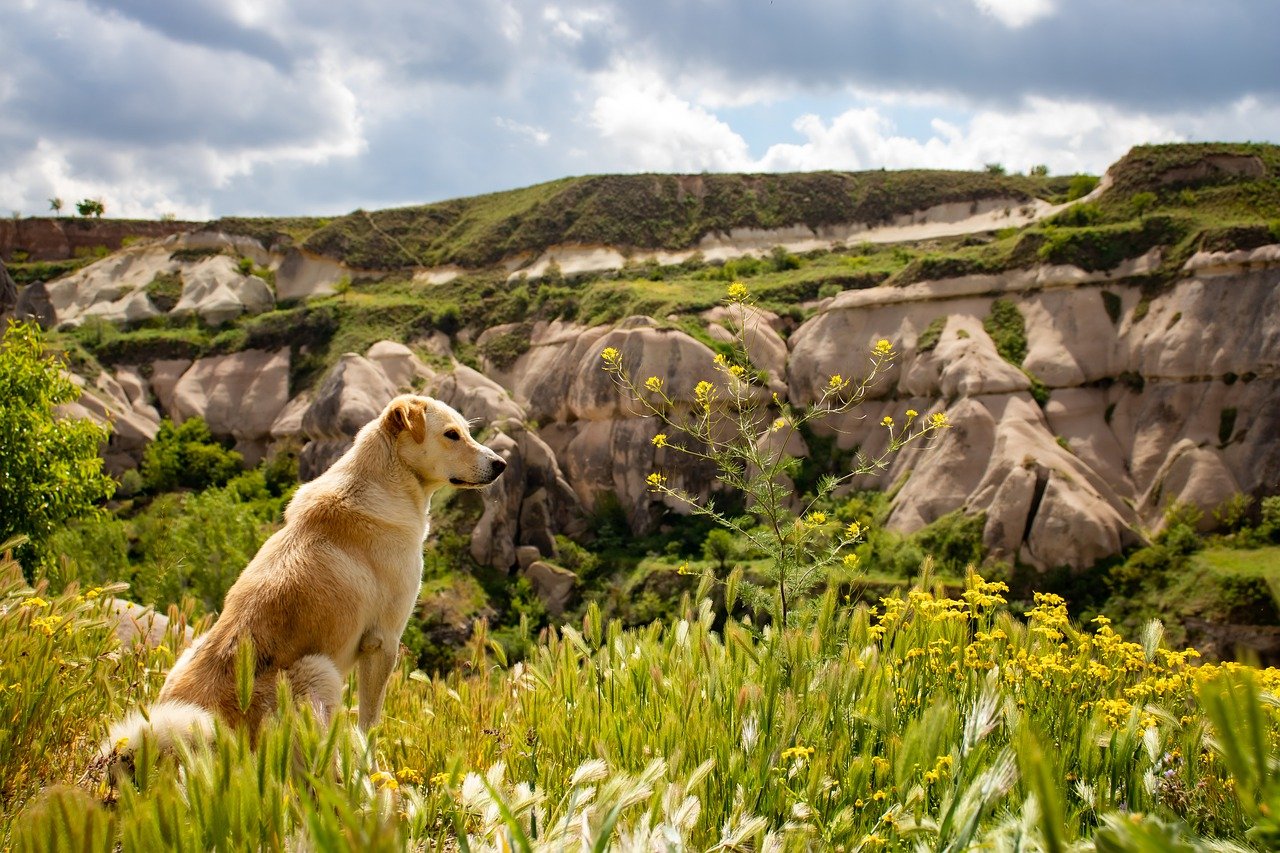If you’re a dog owner as well as a hiker, you probably can’t wait to hit the trail this summer with your four-legged friend. Before you head out into the great outdoors, however, both you and your canine companion need to be ready for what’s in store. Just like hiking with kids, hiking with your dog requires a little extra planning and preparation to make sure that everyone enjoys the experience—and stays safe. Here are some of the most important things you’ll need to do before heading out for a day of dog-friendly hiking.
1. Make sure your dog is physically ready.
Hiking can be a strenuous activity for humans and dogs alike, so it’s important to feel confident that your dog is physically up to the challenge. Longer, tougher hikes are usually best suited to larger breeds (dogs weighing over 40 pounds). Smaller dogs may be willing to follow you along a difficult trail, but bear in mind that they are likely to need more help with steep climbs and other obstacles, and they may struggle to keep up at times.
You’ll also need to consider the age of your dog. Puppies shouldn’t attempt any serious hiking until their bones, not to mention their immune systems, have fully developed, so you won’t want to hit the trail until your pup is at least 1 year old. Dogs over 10, on the other hand, are more likely to be affected by conditions such as hip dysplasia or arthritis, which can slow them down and make them less comfortable on a hike. When in doubt, consult your vet about what your dog can handle (at the same time, double-check that your pooch’s vaccines are up to date!).
2. Assemble the gear you need.
Packing the right gear will help your dog stay safe and comfortable on the trail. Important items to bring along include:
Food and water—To keep your dog well hydrated on your hike, it’s usually a good idea to bring at least 8 ounces of water (per dog) for every hour that you plan to be on the trail. As for food, plenty of nutritious, protein-packed dog treats will help keep your dog’s energy level high.
Leash—Keeping your dog leashed is a must on many trails, so be sure to bring one durable enough to withstand tough trail conditions. It’s usually a good idea to avoid expandable leashes while hiking, as a long leash length can make it difficult to control your dog over challenging terrain.
Identification tag—An ID tag that includes your dog’s name and your phone number will make it easier for you to be reunited with your furry friend if you get separated on the trail.
First-aid kit—Your dog is unlikely to be seriously injured while out hiking, but paw injuries (from slipping or stepping on a thorn, for example) are not uncommon. First-aid supplies that can help you deal with such an occurrence include bandages and gauze pads, tweezers to remove foreign objects, hydrogen peroxide for disinfecting, scissors to trim fur around wounds, and a small sock or bootie to protect an injured paw.
Dog waste supplies—Perhaps the most important rule of hiking with your dog is to never leave dog deposits behind on the trail. Instead, you should always be prepared to pack out any and all dog waste, so bring plenty of poop bags along on your hike (this will let you double-bag waste for extra security).
3. Choose an appropriate trail and practice proper etiquette.
While your dog is likely to be welcome on many of your favorite hiking trails, do keep in mind that there are some trails where dogs aren’t permitted. When planning your hike, it’s a good idea to double-check whether your furry friend is allowed to hike alongside you. Most regional or city-specific hiking guides will specify which trails are dog-friendly, and you can also consult online hiking forums for more information.
Once you’ve chosen an appropriate hike, you’ll also want to make sure that both you and your dog know how to behave on the trail. General etiquette guidelines to follow include keeping your dog on a leash; yielding right of way to other hikers, horses, and bikes; and always picking up after your dog, as mentioned earlier. You’ll also want to feel confident that you can keep your dog calm and under control when encountering other hikers and, more importantly, their dogs. To help with this, smile and greet other approaching hikers as you move along the trail; this will put your perceptive pup at ease and show them that there’s no need to be scared or agitated. Finally, review key obedience commands like “come” and “stay,” and make sure that your dog responds appropriately.

Sorry, comments are closed for this post.